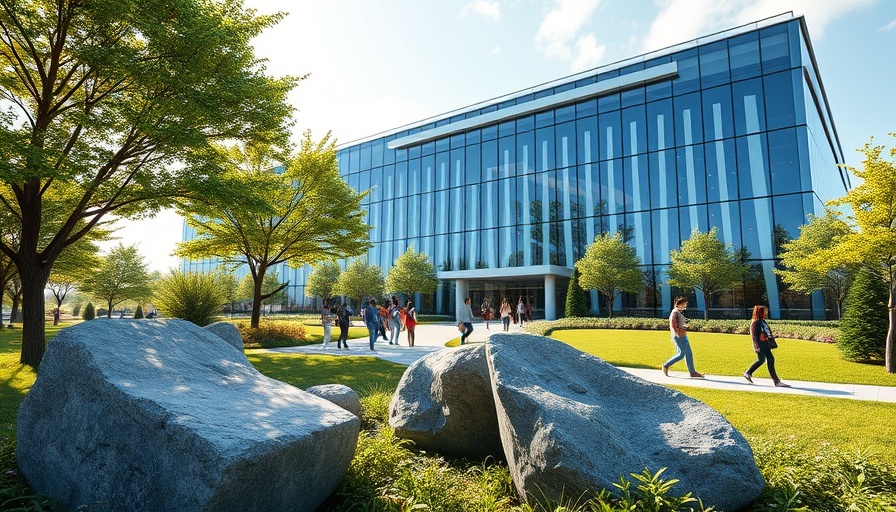
Ford's Innovative Shift: A New Era Begins
Ford Motor Company's decision to relocate its headquarters signifies a transformative shift in how the organization operates. By moving from the historic "Glass House" to a new, expansive facility at its Product Development Center, the automaker is set to enhance collaboration among engineering, design, and corporate leadership, accelerating innovation in a competitive market.
The Rise of Collaborative Spaces in Corporate America
Collaboration has become a cornerstone for companies striving for innovation. By situating 4,000 employees from key departments in a single location, Ford aims to streamline processes that have historically been time-consuming. Previously, executives had to navigate between separate buildings to review products, wasting valuable time. The new office design emphasizes open spaces and easy interaction, promoting the kind of creativity that leads to groundbreaking automotive advancements.
Key Features of the New Headquarters
This cutting-edge facility isn't just about space; it is designed with the future in mind. Featuring state-of-the-art design studios, over 300 technology-enabled meeting rooms, and amenities such as a 160,000-square-foot food hall and wellness rooms, the headquarters prioritizes employee well-being and satisfies modern demands for workplace amenities. With green spaces that encourage breaks and informal meetings, Ford is fostering an environment where ideas can flourish.
Historical Context: Saying Goodbye to the Glass House
The "Glass House," officially named the Henry Ford II World Center, has long been a symbol of Ford's legacy and a witness to momentous developments in automotive history. Opened in 1956, it stood as a testament to post-war corporate architecture. However, as Bill Ford pointed out, the building had become outdated, with many areas requiring renovation just to remain functional. Moving into a contemporary space is not only practical; it's a reflection of Ford's commitment to innovation and modernization.
The Future of Ford: Cultivating Innovation
With significant changes in the automotive landscape—especially toward electric and autonomous vehicles—Ford's new headquarters is a strategic move to stay ahead. By merging teams and encouraging face-to-face interactions, the company aims to position itself at the forefront of these technological advancements. This relocation is not merely physical; it represents a significant cultural shift within Ford, aligning the company's leadership with its engineering ethos.
Conclusion: A Catalyst for Change and Growth
As Ford embarks on this exciting new chapter, the implications of this headquarters move extend beyond just logistical benefits. It signals a recommitment to innovation and teamwork that is vital to competing in today's rapidly evolving automotive industry.
 Add Row
Add Row  Add
Add 




Write A Comment